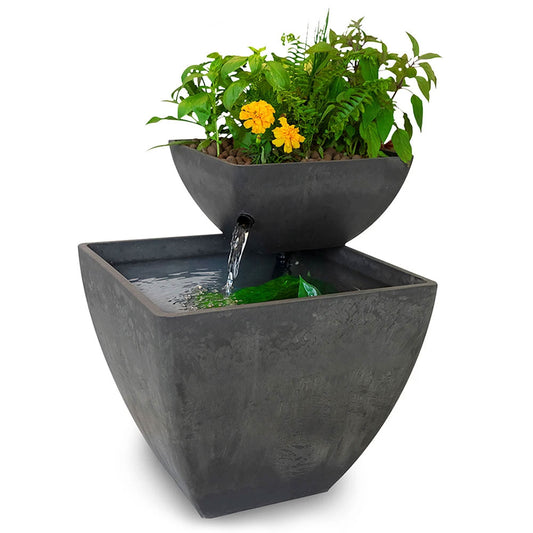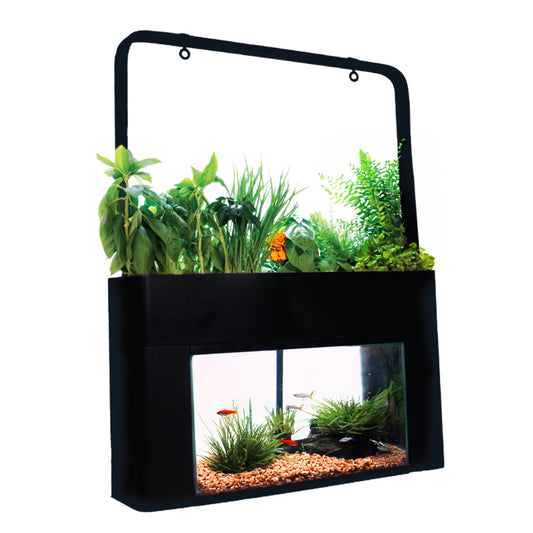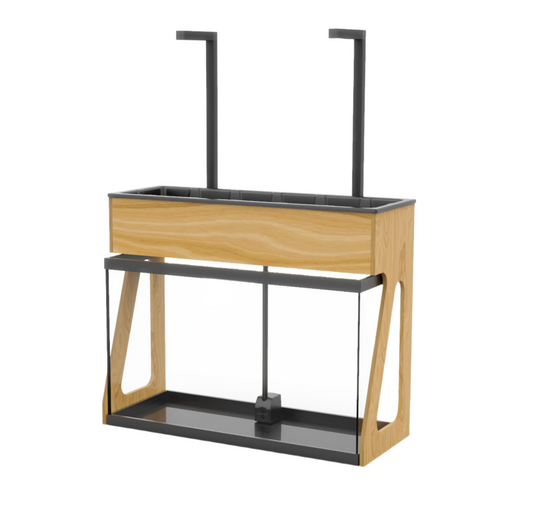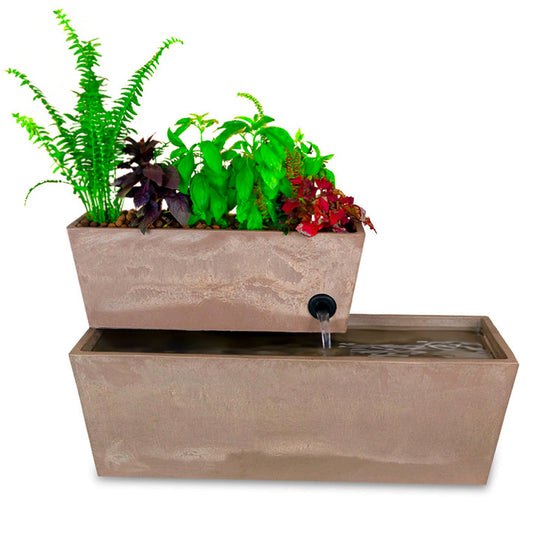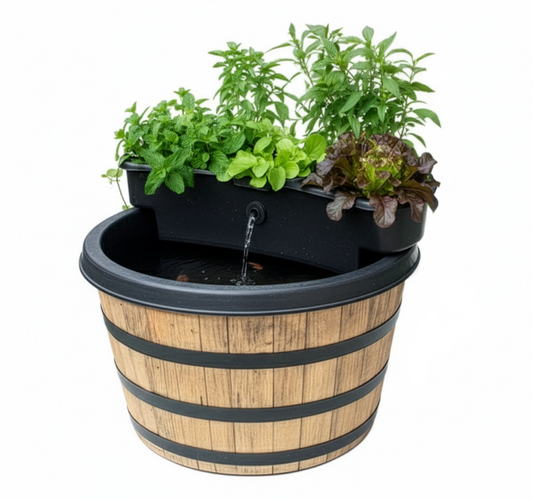Understanding pH in Aquaponics

Understanding “pH level” and what acidity, alkalinity, and related measurements mean can seem intimidating. We won't tell you it's simple; chemistry is a complicated subject. You don't have to tackle the whole subject at once, though! Learning just a little bit about water chemistry can make a big difference in the health of your aquarium or aquaponic garden. Since pH is the water measurement you'll hear the most about, let's unpack it and see how easy it actually is to manage.
pH is, most directly, a measurement of how acidic or basic a water-based solution is. It is a logarithmic system in which each point represents an order of magnitude of concentration - specifically, concentration of free hydrogen ions. The lower the value is, the more acidic a substance is. The pH of pure water is 7 - neutral. Dissolved substances in the water will interact with water molecules and change the balance of hydronium (H+) and hydroxide (OH-) ions, changing the pH. Even air will change pH! Highly purified water will turn slightly acidic as CO2 from the air dissolves into it.
Aquatic life depends on a stable pH; the chemistry of the surrounding water affects most biochemical processes in aquatic organisms, including not only fish and plants, but microbes as well. Since natural environments vary widely in pH, and natural processes can change pH significantly in a closed system,
it's important for your aquaponic garden that you know the pH range your micro-ecosystem will need to thrive, and that you monitor and maintain pH in an acceptable range. You'll also need to choose fish and plants that all have compatible needs, since they'll all be sharing the same water.

What should the pH of your aquaponics system be?
In general, if you're not sure about pH, stay close to neutral. While life exists in all kinds of water chemistries, most aquatic organisms exist within a pH range of 6-8, and most plants, especially food crops and herbs, will thrive in slightly acidic conditions of pH 6-6.8. Specialized systems may be kept with a variety of water conditions, but in general-purpose home aquaponics, aim to keep your pH between 6.4-6.8.
Maintaining your system's pH is a matter of regular testing and small adjustments; rapid, large swings in pH can shock your system and negatively impact the health of your garden. Depending on the quality of your source water and the amount of metabolic activity in your system, you may need to adjust your pH regularly up or down, or you might find it to be fairly stable, requiring only occasional fine-tuning. (For the AquaSprouts Garden, we selected components to help keep your pH stable in the long term! You can read more about it here.)
What's a buffer?
A buffering agent is a weakly acidic or basic substance dissolved in water which helps to prevent rapid changes in pH. There are an endless variety of chemical buffers, but in aquariums and aquaponics, you'll almost always be concerned with carbonates. These are weakly basic compounds which don't drive pH up too high on their own, but will help to slow down acidification. Since organic metabolic processes tend to acidify the surrounding environment, carbonates help keep your system from rapidly becoming more and more acidic as your bacteria and fish digest and breathe.
Carbonates are commonly measured on a scale called KH. The abbreviation simply comes from the German term for "carbonate hardness." Since carbonates are the primary buffering agents in fresh water, this is closely related to alkalinity, a measure of water's ability to resist acidification, and the two terms are often used interchangeably. (This is not the only measurement of "hardness" in water, and different hardnesses can refer to different chemicals and different properties! In this post, we'll stick to carbonate hardness, but if you see references to GH, or general hardness, be aware that it refers to a different set of dissolved substances with different properties. GH may also overlap with TDS - total dissolved solids - and several mineral content measurements. You don't necessarily need to know all about these, but knowing that they're out there can help make it all a bit less confusing!) The most common source of carbonates is calcium carbonate, the substance which makes up limestone and other rocks through which groundwater flows in many areas. If you have hard tap water, you'll likely also have a relatively high pH (< 8), and you may have trouble adjusting it downward. Most plants struggle to grow in hard, alkaline water. Unfortunately, there's no easy way to take dissolved minerals out of water, so if your tap water is hard, we suggest using an alternate water source for aquaponics.
If you're starting with softer water, you may need to buffer it yourself. There are many products available for buffering aquarium water, but an easy first step can be to place some mineral limestone or even a sachet of crushed clean eggshell in your tank (eggshell is made of calcium carbonate as well!). Test kits for carbonate hardness are widely available and easy to use; aim to keep your KH below 4 degrees (dKH), with .5-1.5 dKH being ideal for a slightly acidic pH. If you're only testing pH, you can add buffering agents a little at a time when you need to increase pH, but be sure to give them time to dissolve and test again before you add more.
Buffers remain in the water or are slowly removed by organic processes, so adjusting your buffering is different than simply adjusting your pH! Use pH adjustment chemicals for fine-tuning pH, and add buffering agents if you find that your pH is consistently trending downward over time even after you adjust it.
There's always more to learn about your aquaponic system, but this overview should get you up to speed about maintaining pH. Keep learning, and happy growing!

